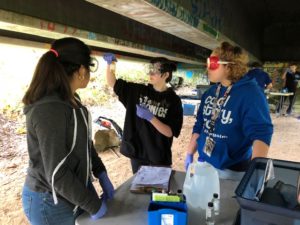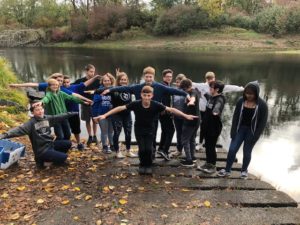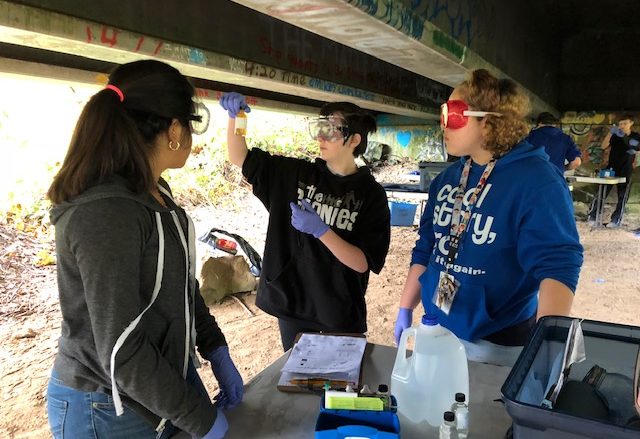Being a teacher that is new to the district, area, and middle school, water quality testing was a completely new thing for me. This year was full of a lot of first, but learning how to take a group of students through water quality testing is a skill that will stay with me wherever I go. I attended a training back in order to learn what water quality testing was all about. After a full Saturday of activities, I was ready to go!
 On a drizzly Tuesday morning, we loaded 40 students into a bus and we were off. Our destination was the Chehalis River- at the Porter Boat Launch. This was my first time ever taking a field trip with middle school students- I was pretty nervous. However, from the moment we stepped off the bus, all of the training we had done in the classroom kicked in. Students set out tables, set up stations, and were ready to get started!
On a drizzly Tuesday morning, we loaded 40 students into a bus and we were off. Our destination was the Chehalis River- at the Porter Boat Launch. This was my first time ever taking a field trip with middle school students- I was pretty nervous. However, from the moment we stepped off the bus, all of the training we had done in the classroom kicked in. Students set out tables, set up stations, and were ready to get started!
First, Danette and I walked the students down to the river. We made observations about the quality of the river and its surroundings. In class, we have had many conversations and activities about what a healthy river looks like and the creatures that can live in a healthy river. Some students noticed that the riparian zone seemed to be quite healthy- there were many grasses and trees growing along the river bank. However, since many of them were shorter, we expected that the water might be a bit warmer than usual and not as many leaves might make it into the water.
Once we had gathered the water, the students took off with their newfound knowledge of water quality testing. We did two sets of three trials in order to compare our results, which came back quite positive. We did notice that the water was 11 degrees Celsius, which would be a bit high for optimal health of the river. It was great to see them make that connection! Other than that, our river seemed to be living a healthy life.
 It was a rewarding experience taking students out to survey the world around them. This is our watershed, and it is our responsibility to make sure that it stays healthy. When students take ownership of the things around them, they can see how their actions and the actions of their community affect the ecosystem. We also thought it was pretty cool to create data that actually goes somewhere, instead of just staying in our classroom. Now the students can say they are a small part of a much larger project, and world.
It was a rewarding experience taking students out to survey the world around them. This is our watershed, and it is our responsibility to make sure that it stays healthy. When students take ownership of the things around them, they can see how their actions and the actions of their community affect the ecosystem. We also thought it was pretty cool to create data that actually goes somewhere, instead of just staying in our classroom. Now the students can say they are a small part of a much larger project, and world.
Submitted by Megan Miller, teacher at Rochester Middle School.
